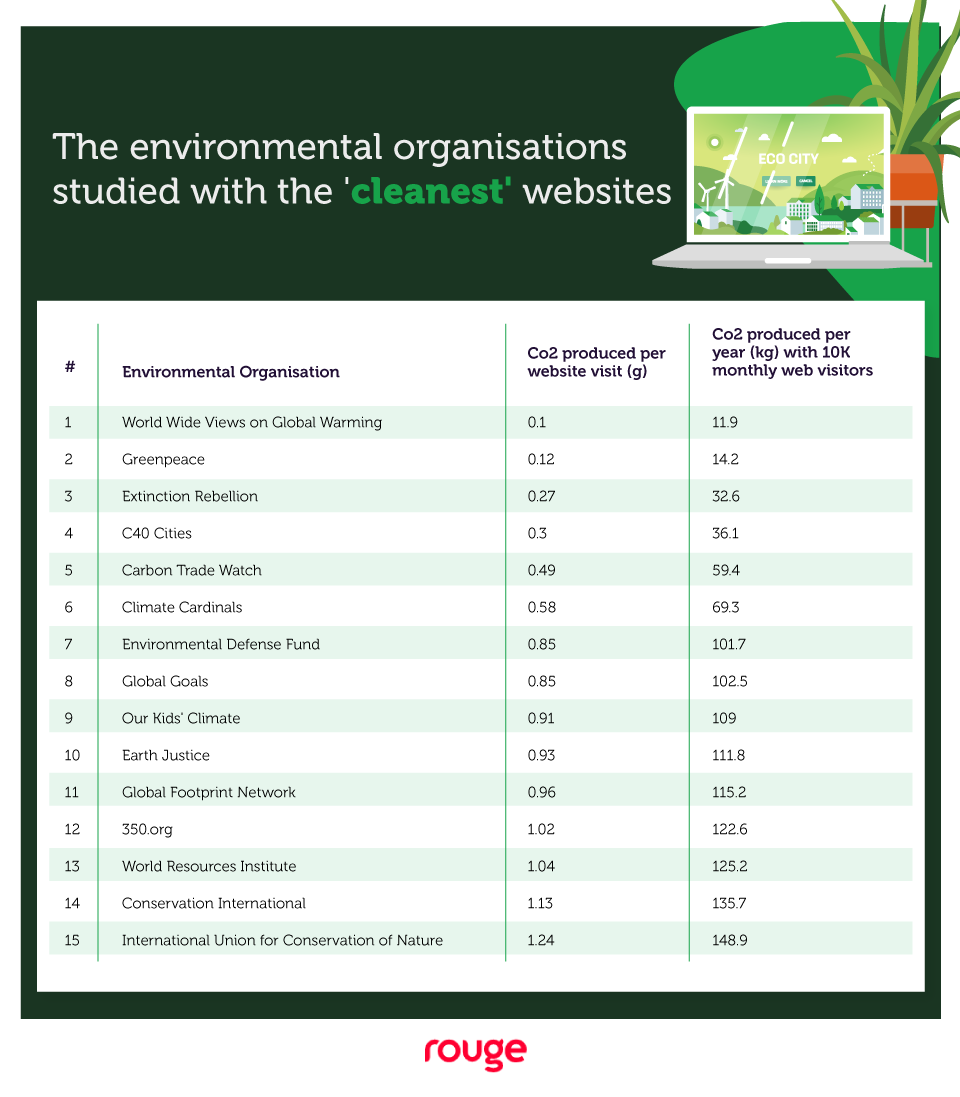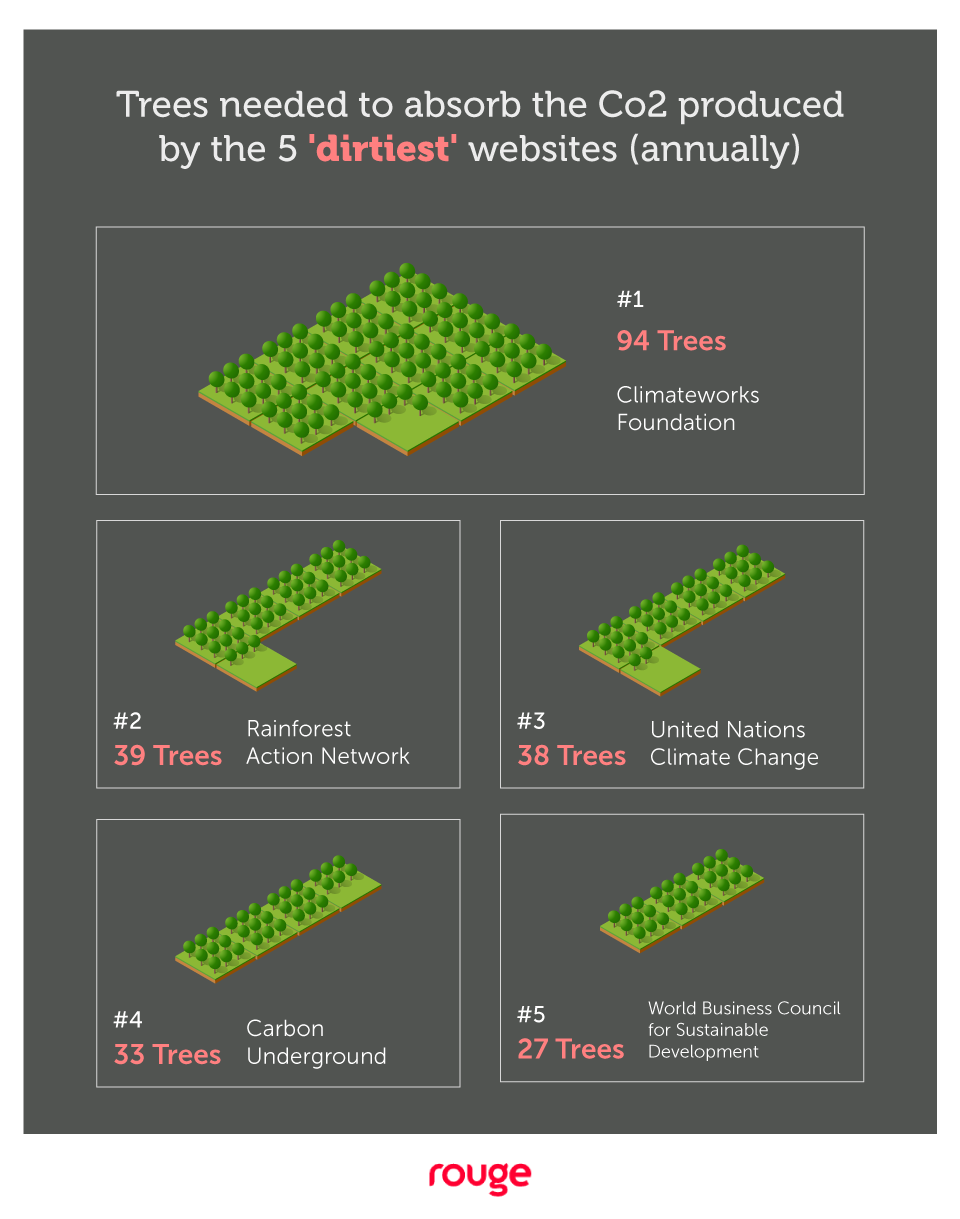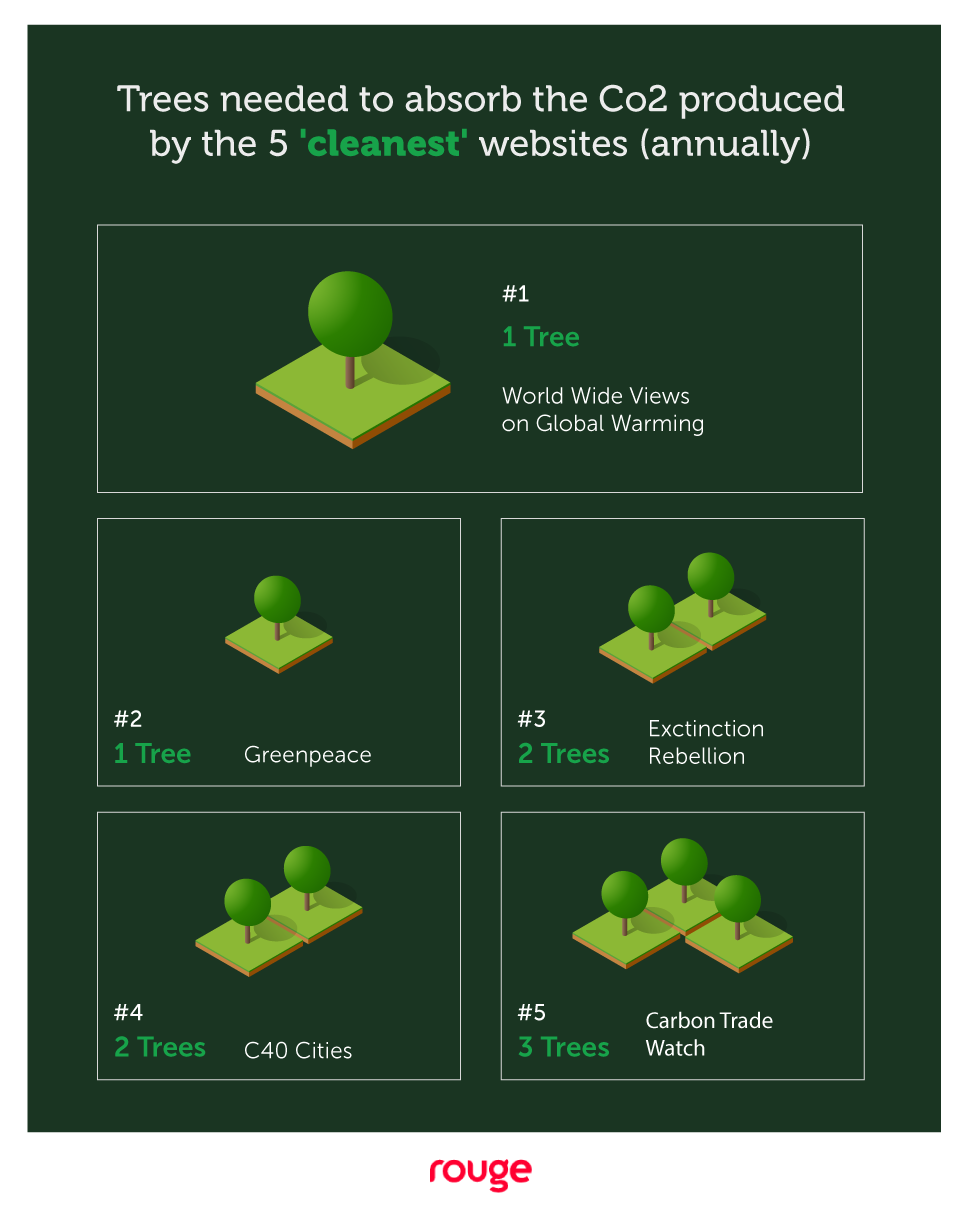The virtual world has many real-world consequences. And with sustainability becoming one of the most important values of the modern age, more organisations are taking important steps – and giant leaps – forward on their “green” journeys.
But web design remains an often-overlooked place where organisations can cut their carbon footprint with minimal effort or spend. In fact, research has shown if the internet were an actual country, it would be the sixth-largest polluting in the world.
The more time a user spends on your site and the higher the number of steps they must go through to complete a task (plus other factors), the more energy is consumed.
Environmental organisations are the logical leaders in this digital evolution towards a more energy-efficient internet, but are they as ‘clean’ as we hope they are?
Perhaps not.
In the lead-up to Earth Day 2022, we’ve analysed the carbon footprints of 42 worldwide environmental organisations’ websites to identify the ‘cleanest’ and ‘dirtiest’, based on the energy source they likely run on and the estimated amount of Co2 produced per visit.
Our findings come as the Eco-Friendly Web Alliance (EFWA) creates the world’s first eco-standard for websites that emit less than one gram of Co2 per page view. It hopes to prevent a further 500,000 tones of Co2 from being added to the atmosphere in the next decade by supporting website operators to cut the emissions their sites produce.
Using data scraped from the Website Carbon Calculator tool, it is estimated that 57% of the 42 websites studied run on energy from sustainable sources. The remaining 43% use datacentres that run on ‘bog standard energy’ from the electricity grid or are not registered with The Green Web Foundation. This means carbon footprint savings are being missed:

Looking at the top 15 ‘dirtiest’ environmental websites studied, if each site had 10K visitors a month for a year, an estimated 9,231kg of Co2 would be produced – that’s over 9 tonnes.

To put this amount into perspective, 427 trees would be needed to absorb this amount of Co2. It’s enough energy to fully charge an iPhone 13 Pro 585,229 times or drive an electric car 128,299km – the U.S. Route 66 highway over 32 times.
By comparison, the 15 ‘cleanest’ environmental websites would produce 1,296kg of Co2 annually. This amount could be absorbed by 66 trees, charge an iPhone 13 Pro 84,204 times or power an electric car for 18,497km.

World Wide Views on Global Warming has the ‘cleanest’ environmental website studied, producing just 0.1 grams of Co2 per visit, closely followed by Greenpeace (0.12g), Extinction Rebellion (0.27g), C40 Cities (0.3g) and Carbon Trade Watch (0.49g).
Only 9 trees would be needed to absorb the Co2 produced by the five ‘cleanest’ websites annually, compared to 231 trees for the five ‘dirtiest’.
At the other end of the rankings, Climateworks Foundation produces the most Co2 per visit (17.1g) or 2,056kg a year taking 94 trees to absorb, followed by Rainforest Action Network (7.1g), United Nations Climate Change (6.8g), Carbon Underground (6g) and the World Business Council for Sustainable Development (4.9g).




How to make your website more sustainable
Here is a list of 5 things to consider when designing your next website to help you keep it green:
- Use a green energy source to host your site – check out The Green Web Foundation for a directory of sustainable hosting providers.
- Consider alternative content formats – for example, viewing a video requires a huge amount of data downloaded in comparison to other content formats.
- Reduce your site loading time – there are several ways to do this but avoiding automatic pop-ups is one of the best places to start.
- Choose your fonts wisely – large font files could eat up as much as 250kb and boldening might double that number.
- Plant trees to offset your website’s carbon footprint.
Methodology
A seed list of 42 major worldwide environmental organisations was produced using reputable directories and secondary research. Each website was analysed using V2 of the Website Carbon Calculator tool in February 2022, developed to help inspire and educate people to create a zero-carbon internet.
The tool provided estimates for each homepage:
- How many grams (g) of Co2 is produced per page view
- How many kilograms (kg) of Co2 is produced annually at a rate of 10K page views a month
- How many trees would be needed to absorb the amount of Co2 produced annually
- Whether the website is hosted by a datacentre using standard electricity from the grid or from sustainable sources
- How many KwH of energy is produced annually and how far this could power an electric car (kms)
Rouge Media also calculated how many times an iPhone 13 Pro could be fully charged using the estimated KwH of energy produced annually by each website, using battery information found here.






